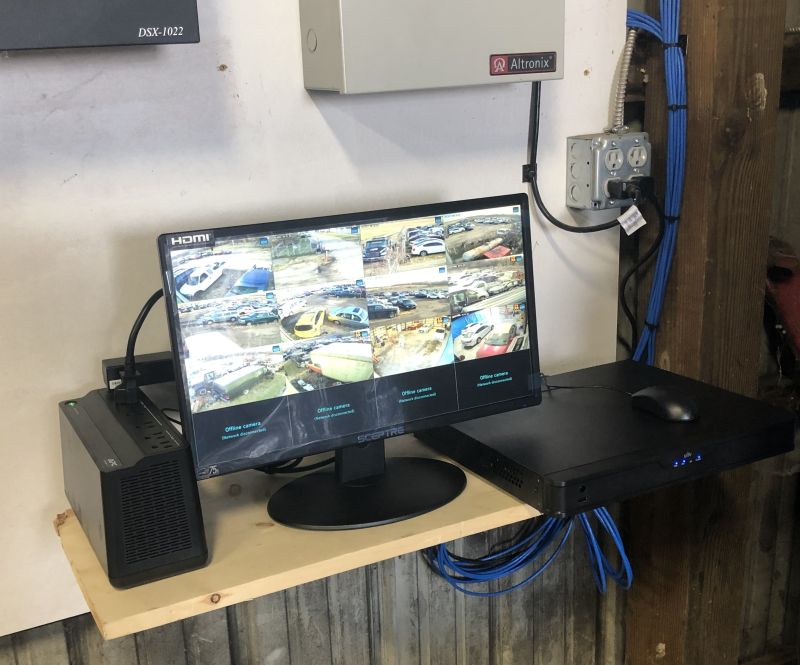As an audio professional with years of experience in the field, I’ve seen firsthand how the nuances of signal conversion can make or break a sound system. Today, we’re diving deep into a topic that’s crucial for anyone serious about audio: converting balanced to unbalanced audio signals. Whether you’re a budding audiophile, a seasoned sound engineer, or somewhere in between, understanding this process is key to achieving the crystal-clear sound you’re after.
Balanced vs. Unbalanced Audio: The Fundamental Difference
Before we delve into conversion techniques, let’s break down the core differences between balanced and unbalanced audio signals.
Balanced Audio:
A balanced audio signal utilizes three conductors: a positive (hot) wire, a negative (cold) wire, and a ground wire. The audio signal travels along both the hot and cold wires, with the cold wire carrying an inverted version of the signal. This clever configuration allows for effective noise cancellation, making balanced audio ideal for long cable runs and environments plagued by electromagnetic interference.
Unbalanced Audio:
In contrast, an unbalanced audio signal employs just two conductors: a signal wire and a ground wire. While this simpler design has its place, it’s more susceptible to noise and interference, especially over longer distances.
The Science Behind the Signals
To truly appreciate the difference, let’s dive a bit deeper into the science. In a balanced audio system, the signal is sent over two conductors twisted together. This twisting helps cancel out any noise picked up along the cable’s length. At the receiving end, the signal on one conductor is flipped and added to the other. This process cancels out the noise (now in opposite phases) while reinforcing the audio signal.
Unbalanced systems, lacking this noise-cancelling design, mix any picked-up noise directly with the audio signal. That’s why you’ll typically see unbalanced cables used for shorter runs, like connecting a guitar to an amp, where the chance of picking up noise is minimized.
Why Convert Balanced to Unbalanced?
You might wonder why anyone would want to convert a balanced signal to an unbalanced one, given the apparent advantages of balanced audio. The answer lies in compatibility. Many consumer-grade audio devices, including home stereo systems and some guitar amplifiers, only accept unbalanced inputs. When connecting professional audio equipment (which often uses balanced outputs) to consumer gear, conversion becomes necessary.
Methods for Converting Balanced to Unbalanced Audio
1. The Direct Connection Method
The simplest way to convert a balanced signal to unbalanced is by connecting only the positive (hot) and ground wires of the balanced output to the unbalanced input. This method effectively ignores the negative (cold) wire of the balanced signal.
Pros:
- Simple and straightforward
- No additional equipment required
Cons:
- Potential loss of signal strength
- Increased susceptibility to noise
2. Using a Direct Injection (DI) Box
A Direct Injection Box, commonly known as a DI Box, is a purpose-built device designed to convert balanced signals to unbalanced (and vice versa). It’s a staple in live sound and recording scenarios.
Pros:
- Maintains signal integrity
- Provides impedance matching
- Often includes ground lift switches to eliminate ground loop hum
Cons:
- Additional cost
- One more piece of equipment in the signal chain
3. Transformer-Based Conversion
Some high-end audio interfaces and preamps use transformers to convert balanced signals to unbalanced. This method provides excellent noise rejection and impedance matching.
Pros:
- High-quality conversion
- Excellent noise rejection
Cons:
- Can be expensive
- May color the sound (which some audio engineers actually prefer)
Best Practices for Balanced to Unbalanced Conversion
- Keep Cable Runs Short: When using unbalanced connections, try to keep cable lengths under 20 feet to minimize noise pickup.
- Use High-Quality Cables: Invest in well-shielded cables to reduce interference, especially for unbalanced connections.
- Proper Grounding: Ensure all equipment is properly grounded to avoid ground loop issues.
- Consider Signal Levels: Balanced outputs often operate at +4 dBu, while unbalanced inputs typically expect -10 dBV. Use a DI box or audio interface with level matching capabilities when necessary.
- Avoid Parallel Runs: Keep audio cables away from power cables and other sources of electromagnetic interference.
Common Pitfalls and How to Avoid Them
- Ground Loops: These can cause audible hum. Use a DI box with a ground lift switch or ensure proper system grounding.
- Signal Loss: Improper impedance matching can lead to signal loss. Use a DI box or audio interface designed for balanced to unbalanced conversion.
- Noise Pickup: Unbalanced cables are more susceptible to noise. Use high-quality, well-shielded cables and keep runs as short as possible.
- Phase Issues: Incorrect wiring can cause phase cancellation. Double-check your connections and use standardized color coding.
Real-World Applications
In my years working as an audio engineer, I’ve encountered numerous situations where balanced to unbalanced conversion was crucial. One memorable instance was during a live recording session where we needed to connect a high-end studio microphone preamp (with balanced outputs) to a vintage guitar amplifier (with unbalanced inputs) for a unique sound.
We initially tried a direct connection, but the noise floor was unacceptable. Switching to a high-quality DI box solved the issue, allowing us to capture the desired tone without compromising on sound quality. This experience underscored the importance of having the right tools and knowledge for proper signal conversion.
Future Trends in Audio Connectivity
As technology advances, we’re seeing a shift towards digital audio protocols like Dante and AVB, which can transmit multiple channels of audio over standard Ethernet cables. These systems often include built-in conversion between balanced and unbalanced signals, potentially simplifying setup in complex audio environments.
However, analog connections aren’t going away anytime soon, especially in live sound and home audio setups. Understanding the nuances of balanced and unbalanced audio will remain a valuable skill for audio professionals and enthusiasts alike.
Conclusion
Converting balanced to unbalanced audio doesn’t have to be a daunting task. By understanding the principles behind these signal types and following best practices, you can maintain high sound quality even when working with mixed audio systems. Remember, the key is to use the right tools for the job, whether that’s a simple adapter, a DI box, or a high-end audio interface.
As you continue your audio journey, don’t be afraid to experiment with different conversion methods to find what works best for your specific setup. And always trust your ears – they’re your most valuable tool in the quest for great sound.
Whether you’re setting up a home studio, working on a live sound gig, or just trying to get the best sound out of your audio equipment, understanding the intricacies of balanced and unbalanced audio signals is crucial. With the knowledge and techniques we’ve covered in this article, you’re well-equipped to tackle any audio conversion challenge that comes your way. Here’s to crystal-clear audio and noise-free signals in all your future projects!






0